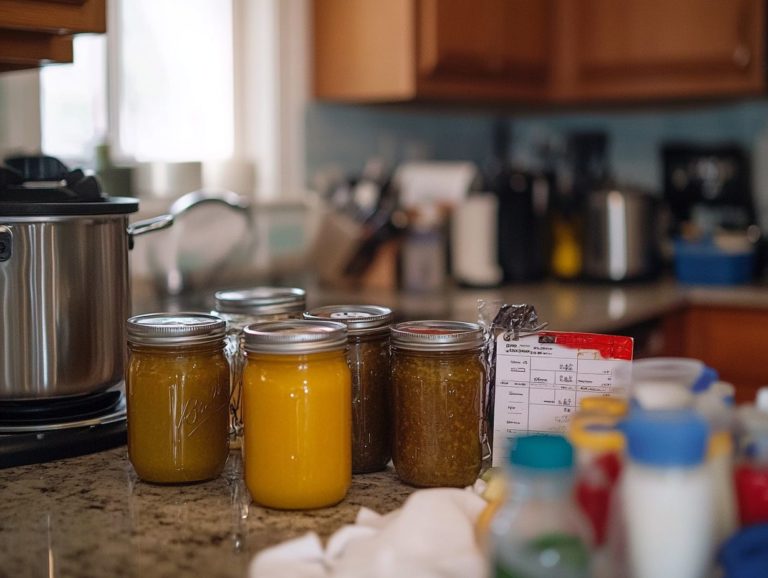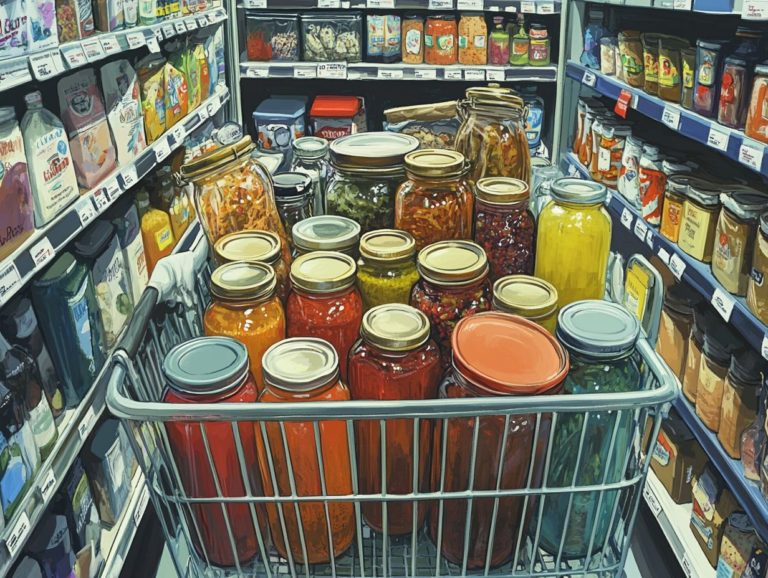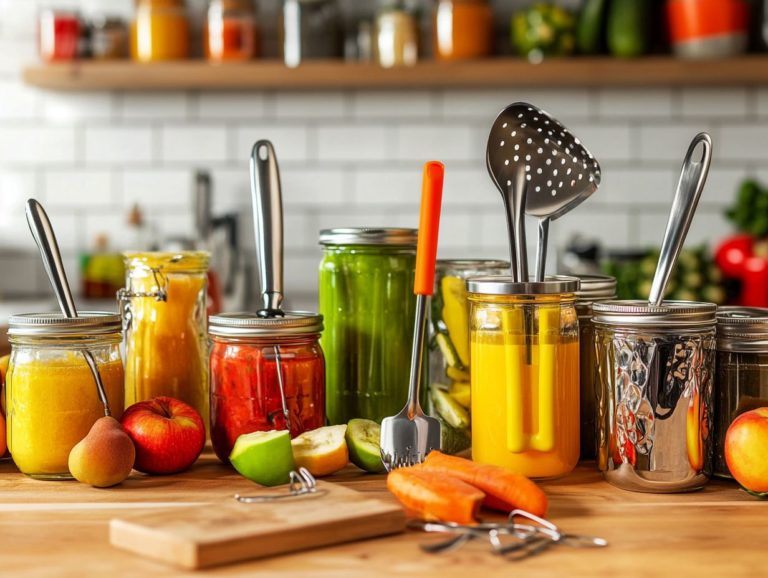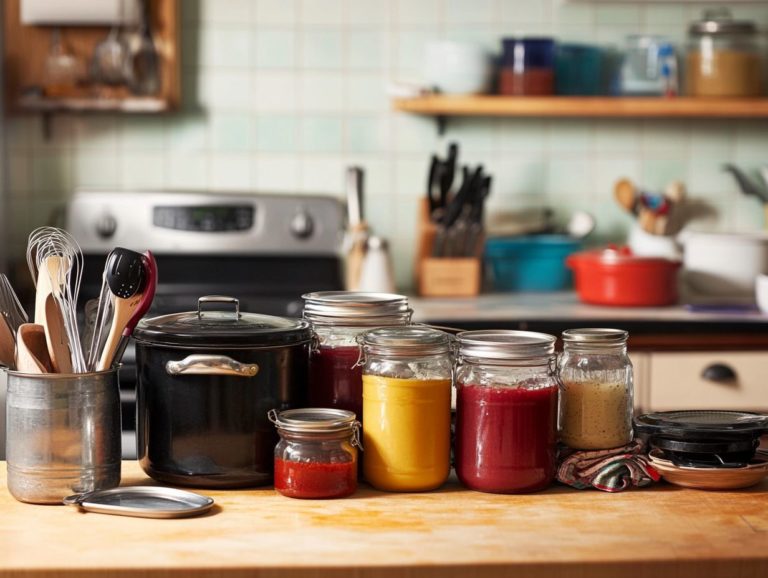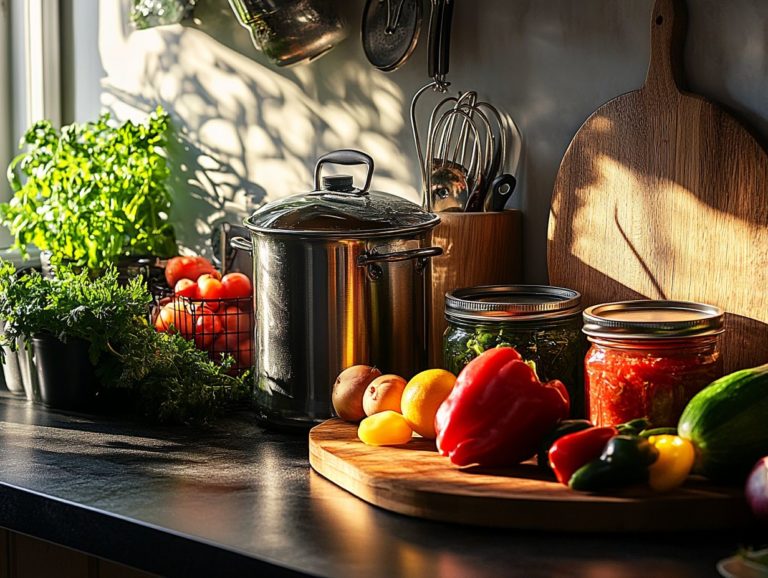How to Maintain Your Canning Equipment
Canning is a rewarding method to preserve your harvest. It’s essential to prioritize the maintenance of your canning equipment to keep your canning process safe and smooth.
This guide provides everything necessary for effective cleaning and regular upkeep, ensuring your tools remain in peak condition.
You ll discover the best storage practices to safeguard your equipment, troubleshoot common issues, and implement strategies to extend its lifespan.
You will also learn how to recognize the signs that indicate it s time to replace worn-out tools. Get ready to master canning maintenance and keep your food safe!
Contents
- Key Takeaways:
- Why is it Important?
- Basic Cleaning and Maintenance
- Storing Your Canning Equipment
- Common Issues and Solutions
- Long-Term Maintenance Strategies
- When to Replace Your Canning Equipment
- Frequently Asked Questions
- What is canning equipment and why is it important to maintain it?
- How often should I clean my canning equipment?
- Can I use regular dish soap to clean my canning equipment?
- What should I do if I notice rust on my canning equipment?
- How should I store my canning equipment when not in use?
- Is it necessary to replace my canning equipment after a certain period of time?
Key Takeaways:
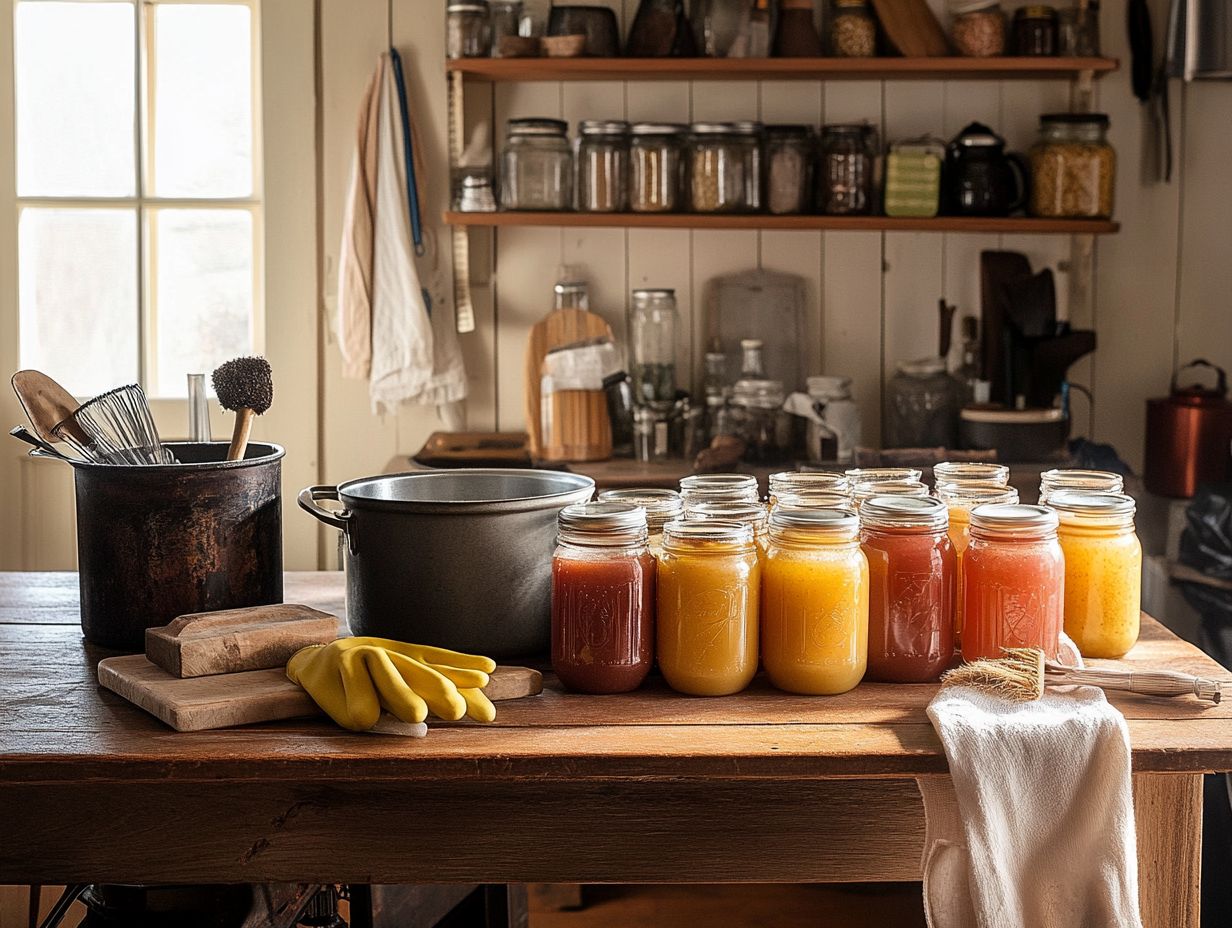
- Clean and maintain your canning equipment regularly to keep it lasting longer and your food safe!
- Store your canning equipment in a cool, dry place to prevent rust and other damages.
- Inspect your canning equipment for wear and tear, addressing any issues promptly to save money in the long run.
Why is it Important?
Grasping the significance of canning and food preservation is essential, particularly in our current climate marked by food shortages and safety concerns, including the looming threat of Clostridium botulinum.
Canning allows you to store seasonal produce while retaining the nutritional value of your food, effectively securing a reliable food source year-round. This skill not only empowers you as a consumer but also reduces reliance on commercial products, making it vital for both newcomers and seasoned canners.
Basic Cleaning and Maintenance
Basic cleaning and maintenance of your canning supplies are essential for ensuring safety and efficiency throughout the canning process. Additionally, understanding the importance of proper canning equipment storage enhances food preservation techniques like water bath canning and pressure canning.
By regularly cleaning your canning jars, pressure canner, and other equipment, you can prevent minor issues from escalating into serious complications, such as food poisoning or spoilage. Additionally, it’s important to know how to test your canning equipment for safety.
Committing to a solid maintenance plan extends the lifespan of your canning accessories and guarantees that your food remains safe to consume.
Proper Cleaning Techniques
Proper cleaning techniques for your canning equipment are essential to avoid contamination and ensure food safety, especially with canning jars and accessories. Embracing food-safe cleaning methods, like washing your jars with a blend of white vinegar and hot water, or using cream of tartar for stubborn stains, helps maintain the integrity of your supplies.
Don’t forget to regularly clean tools such as jar lifters and canner lids; residual food particles can jeopardize the entire canning process. For more information, check out understanding the lifespan of canning equipment. A simple solution of baking soda and water can work wonders for cleaning your tools, ensuring all surfaces are free from grime.
After washing, dry these tools thoroughly to prevent rust and other potential damage. Using a designated brush for scrubbing will help you tackle tricky nooks, and employing food-safe sanitizing solutions will wrap up the cleaning process, keeping contamination at bay and allowing you to can efficiently.
Regular Maintenance Tasks
Regular maintenance tasks are essential for the longevity and reliability of your canning equipment, especially pressure canners that require specific care, like dial gauge testing and ensuring the safety valve is functional.
Stick to a maintenance schedule that includes checking for worn or damaged parts. This can help prevent hazardous situations during food preservation.
It’s crucial to test the dial gauge for accuracy ideally before each canning season to confirm it registers the correct pressure levels. Inspecting the safety valve for any signs of wear or blockage ensures your canner releases steam effectively, minimizing the risks of overheating or malfunctioning.
For replacement parts, ensure they are compatible and of high quality to preserve your equipment’s integrity. By routinely caring for these components, you significantly decrease the likelihood of food preservation failures, ensuring your efforts yield safe and delicious results.
Storing Your Canning Equipment
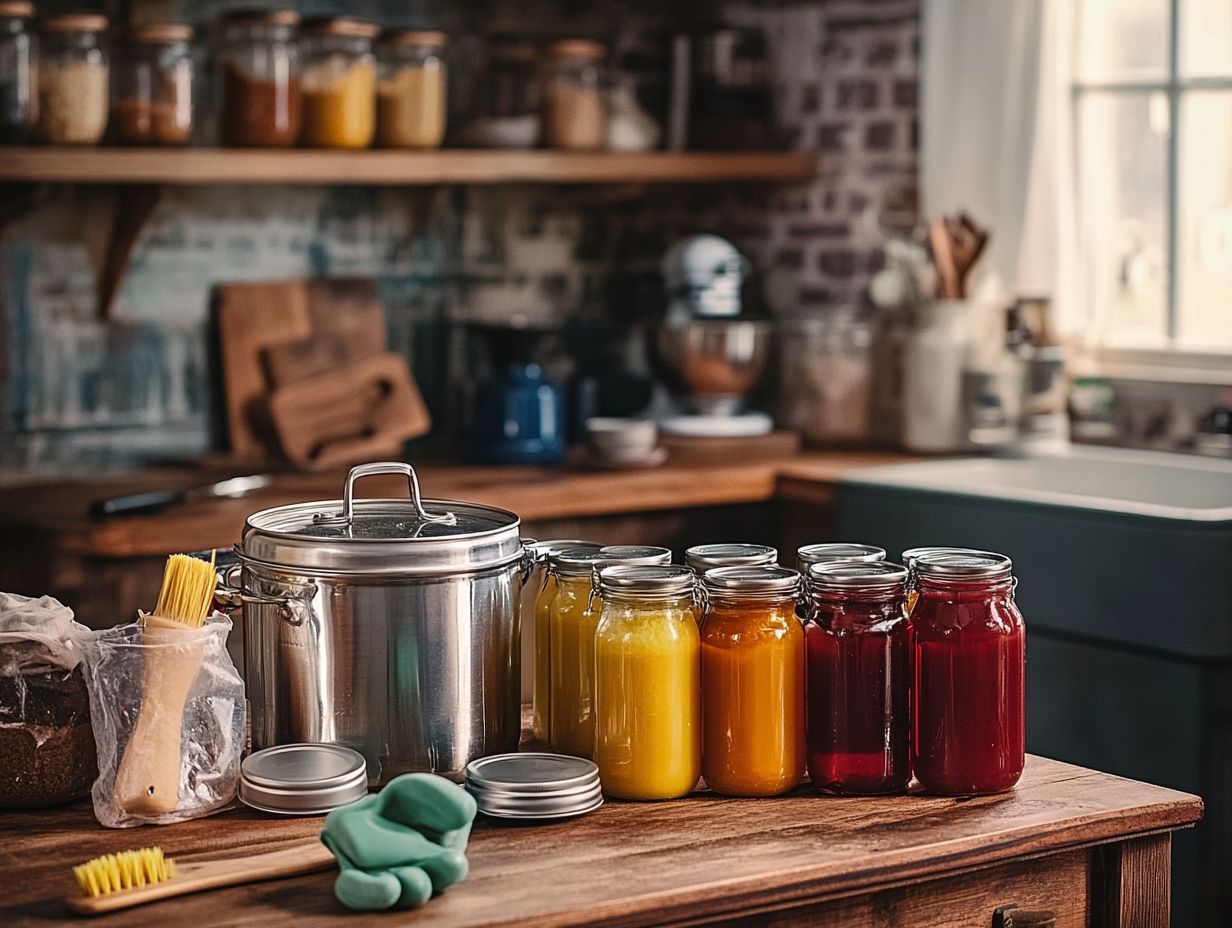
Storing your canning equipment properly is crucial for maintaining its longevity and ensuring its effectiveness for future use. If you’re interested in creating your own tools, learning how to make your own canning equipment can be particularly beneficial when considering the storage of canning jars, pressure canners, and various accessories.
A clean, dry storage area is vital to prevent moisture buildup and mineral deposits that could compromise your supplies over time. By effectively organizing your canning supplies and dedicating a specific space for them, you can streamline your canning processes.
This makes bulk food preservation during the harvesting season a breeze.
Best Practices for Storage
Implementing best practices for storing preserving jars and canning accessories can significantly elevate your canning experience. This ensures that your equipment remains in peak condition for future endeavors, especially when gearing up for bulk food preservation. To get started, check out understanding canning equipment to know what you need.
To maintain the integrity of these crucial items, it s essential to keep them in a cool, dry environment with stable temperatures ideally between 50 and 70 degrees Fahrenheit.
High humidity can invite mold and mildew. If you reside in a particularly damp area, consider investing in a dehumidifier, a device that reduces humidity in the air.
Organize your items methodically; for example, store jars upright in their original boxes or containers to prevent breakage. Keep essential tools like jar lifters and canner lids organized. This makes your canning sessions smoother and more enjoyable.
Common Issues and Solutions
Understanding the common issues that can arise during the canning process such as improper sealing and the risk of food poisoning is essential for achieving successful food preservation and implementing safe canning techniques.
This guide will help you tackle common challenges head-on! It offers you practical solutions to ensure that your endeavors in preserving food yield not only safe but also tasty results.
Troubleshooting Guide
A troubleshooting guide for common canning issues can offer you invaluable insights to prevent food poisoning and enhance your canning success. Prioritize clean equipment and adhere to reliable recipes.
Understanding the root causes of problems like jar sealing failures or overcooking can truly elevate your preservation game. When those jars refuse to seal, it’s essential to inspect the rims for any debris; even the tiniest particles can sabotage the sealing process.
Overcooking can lead to unwanted texture changes, making it crucial to diligently monitor processing times.
To maintain a pristine workspace and avoid cross-contamination, which happens when harmful bacteria transfer from one surface to another, make it a habit to regularly sanitize all tools, lids, and jars before you dive in.
For further assistance, turn to reputable canning resources and recipes that provide detailed step-by-step instructions, ensuring that every batch you create is not just safe, but also delicious.
Long-Term Maintenance Strategies
Implementing long-term maintenance strategies for your canning equipment is crucial for ensuring reliable food preservation throughout the years. This involves regularly checking and maintaining your equipment, as well as understanding how to store your canning supplies effectively and knowing when it’s time to replace parts.
By consistently employing proper canning techniques and consulting technical support resources, you can significantly enhance the effectiveness and safety of your home canning endeavors.
Get started on your canning journey today! It s easier than you think.
How to Extend the Lifespan of Your Equipment
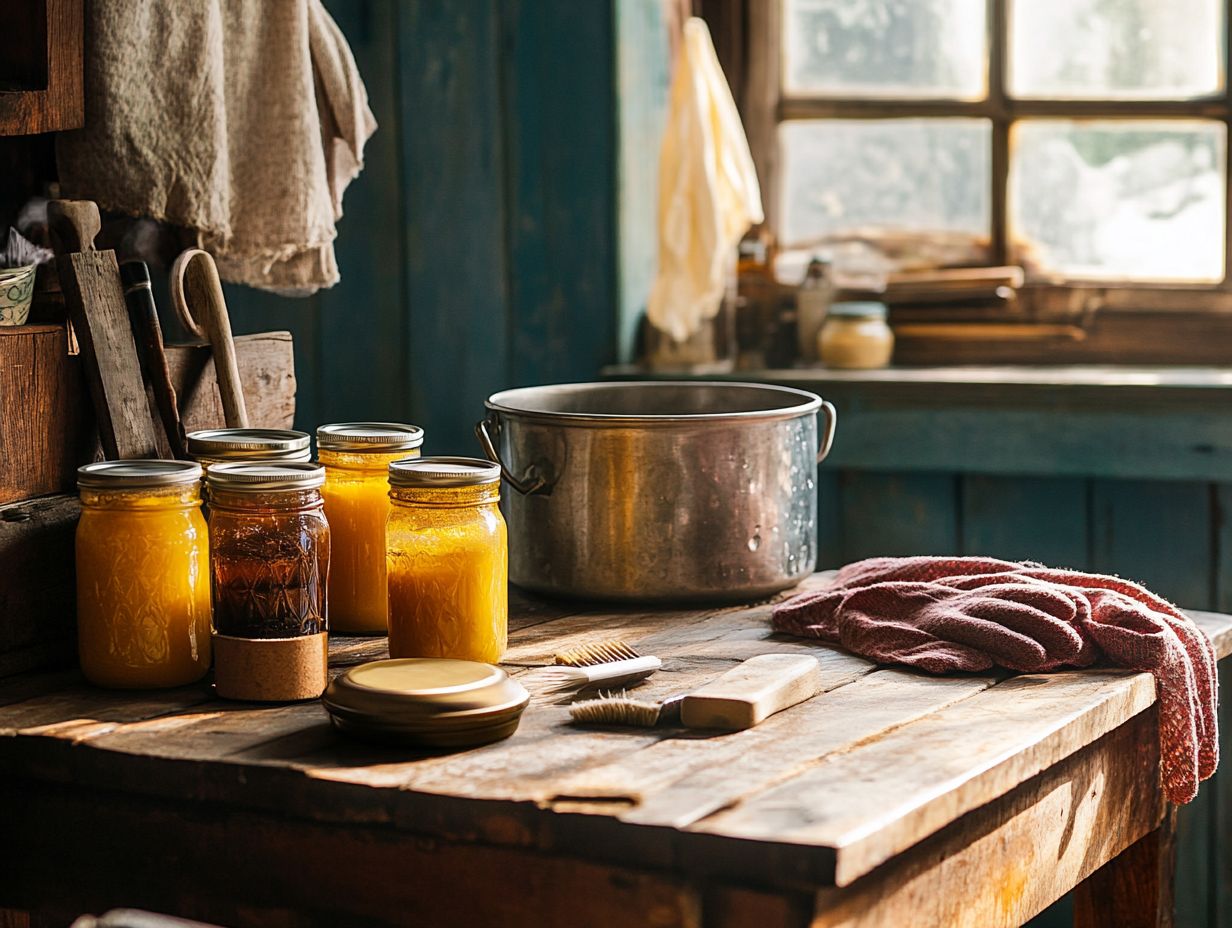
To extend the lifespan of your canning equipment, it’s essential to prioritize cleanliness and regularly inspect your canning accessories for any signs of wear and tear, including the need for replacement parts.
These steps help ensure food safety and improve your canning process.
- Start by thoroughly washing jars, lids, and other components with hot, soapy water, allowing them to dry completely to prevent bacteria buildup.
- When inspecting, pay close attention to frayed seals or damaged lids, as these can lead to issues during canning.
- Keeping a checklist for routine maintenance can be incredibly beneficial.
- Promptly replacing worn parts minimizes the risk of spoilage and maximizes the efficiency of your canning sessions.
Regular maintenance keeps your equipment in great shape for years.
When to Replace Your Canning Equipment
Understanding when to replace your canning equipment is essential for upholding food safety and mastering canning techniques. Signs of wear and tear, like a malfunctioning safety valve or deteriorating seals, should always command your attention.
By routinely assessing your equipment, you can prevent potential accidents and ensure that your methods of preserving food continue to be effective and reliable.
Signs of Wear and Tear
Recognizing the signs of wear and tear in your canning supplies is essential for ensuring both safety and efficiency throughout the food preservation process. Pay close attention to critical components like the safety valve and jar seals.
Look out for subtle yet significant indicators such as discoloration, brittleness, or deterioration of rubber gaskets, as well as the integrity of the lids. To ensure optimal performance, consider upgrading your canning setup by assessing the pressure gauge for accuracy and inspecting heat sources for proper functionality, which are also vital steps in maintaining your canning equipment.
If you notice any component showing signs of damage like warped lids or rusted metal be sure to replace those items immediately to prevent potential spoilage or safety hazards. Check your user manual for clear guidelines on inspecting these elements and know when to seek professional assistance.
Frequently Asked Questions
What is canning equipment and why is it important to maintain it?
Canning equipment refers to the tools and supplies used in the process of preserving food in airtight containers. It is important to maintain them to ensure the safety and quality of your canned goods and to prolong the lifespan of your equipment.
How often should I clean my canning equipment?
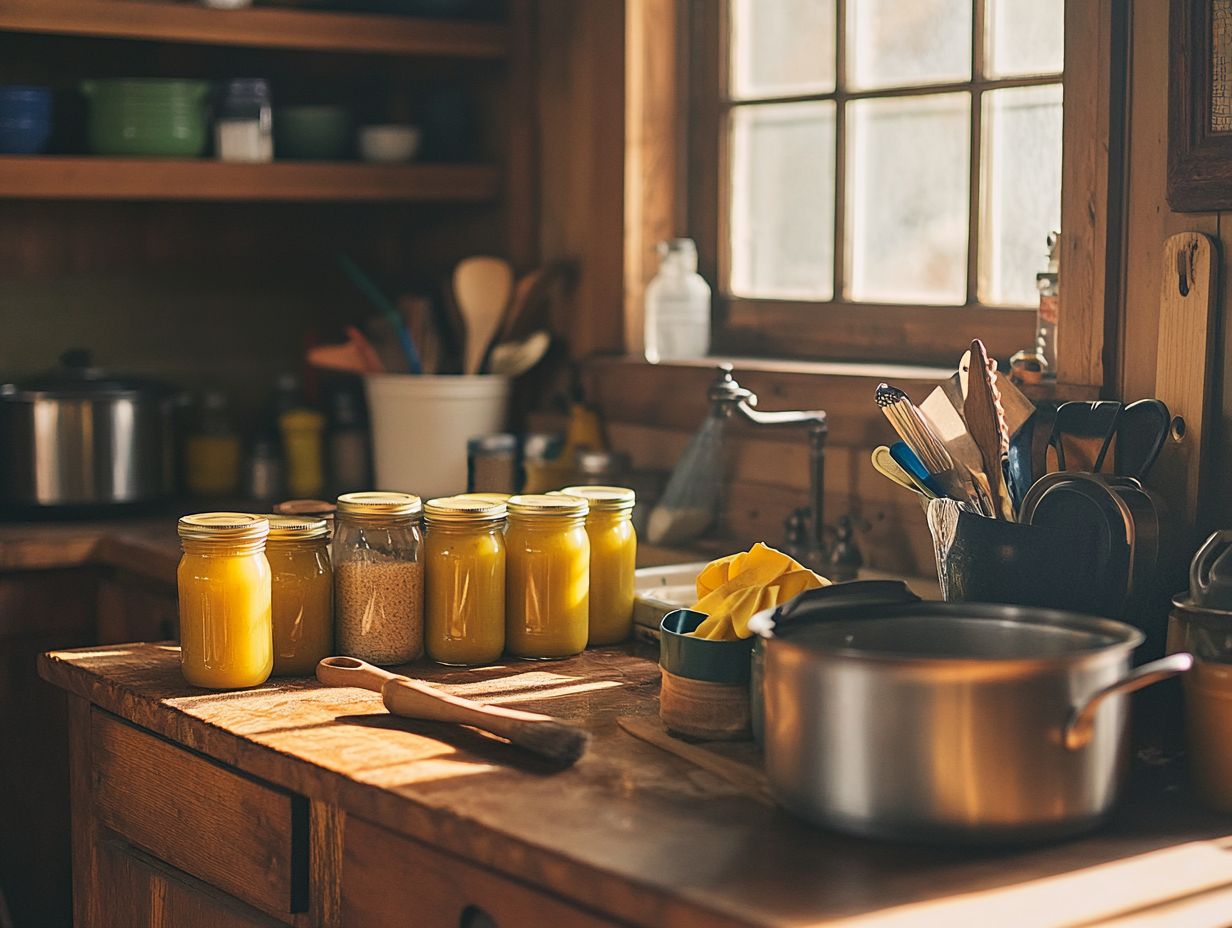
Yes, you should clean your canning equipment after every use. This will prevent any leftover food particles from harboring bacteria and causing contamination in future batches.
Can I use regular dish soap to clean my canning equipment?
No, it is best to use a mild, non-toxic soap specifically designed for canning equipment. Regular dish soap may leave behind residue or contain harsh chemicals that can affect the quality of your canned goods.
What should I do if I notice rust on my canning equipment?
If you notice rust on any of your canning equipment, it is important to replace it immediately. Rust can contaminate your food and compromise the safety of your canned goods.
How should I store my canning equipment when not in use?
It is best to store your canning equipment in a cool, dry place. Make sure they are completely clean and dry before storing to prevent any mold or mildew growth. Additionally, understanding the importance of sterilizing canning equipment can help ensure they remain in optimal condition. Consider using airtight containers or bags to keep them protected and organized.
Is it necessary to replace my canning equipment after a certain period of time?
Yes, it is recommended to replace your canning equipment every few years, especially items such as rubber seals and gaskets that may wear out over time. This will ensure the safety and effectiveness of your canning process.

